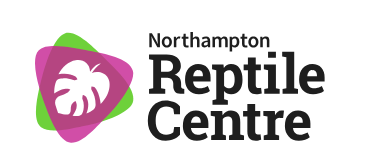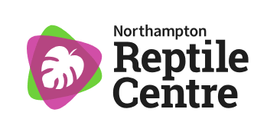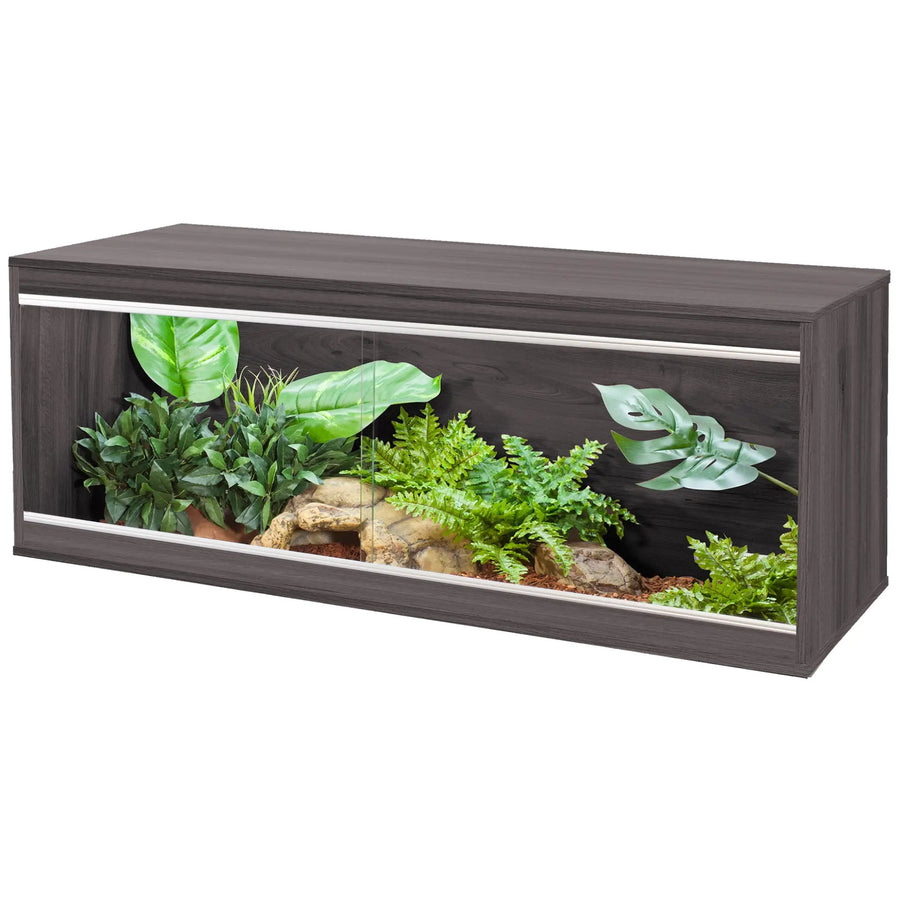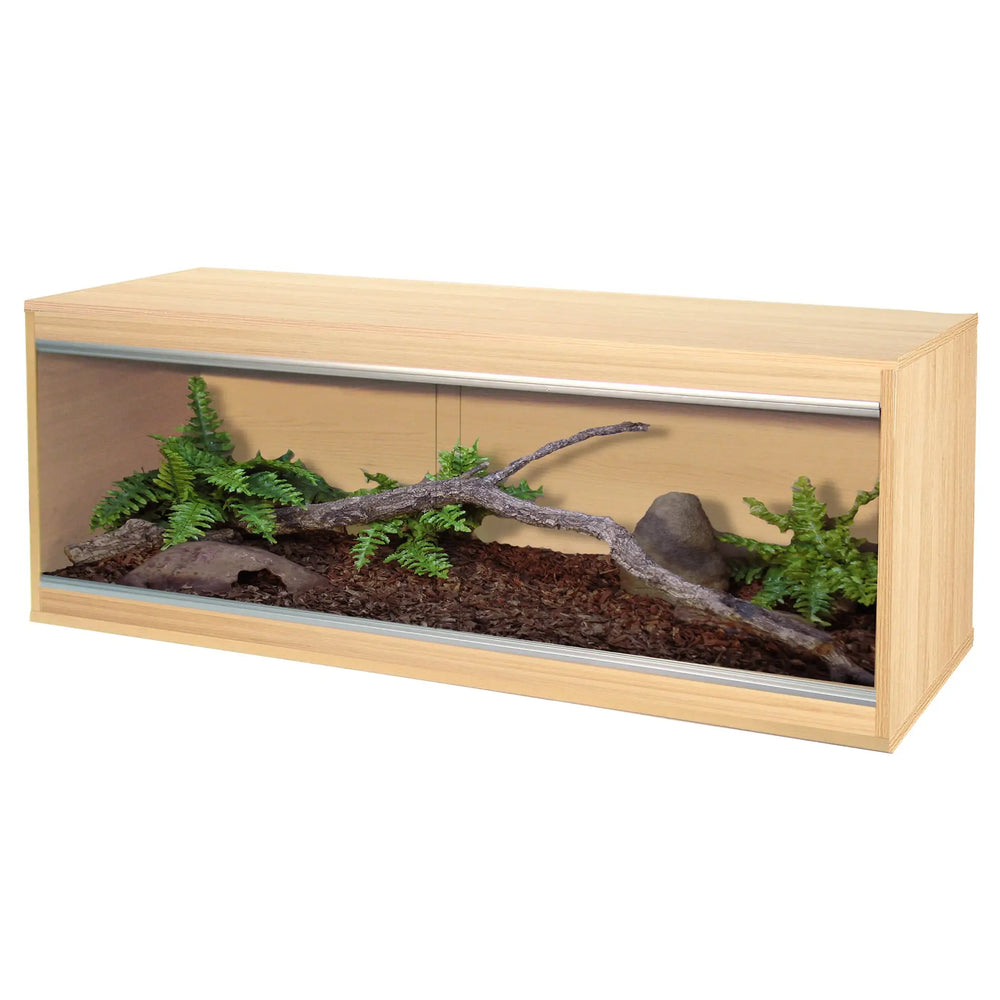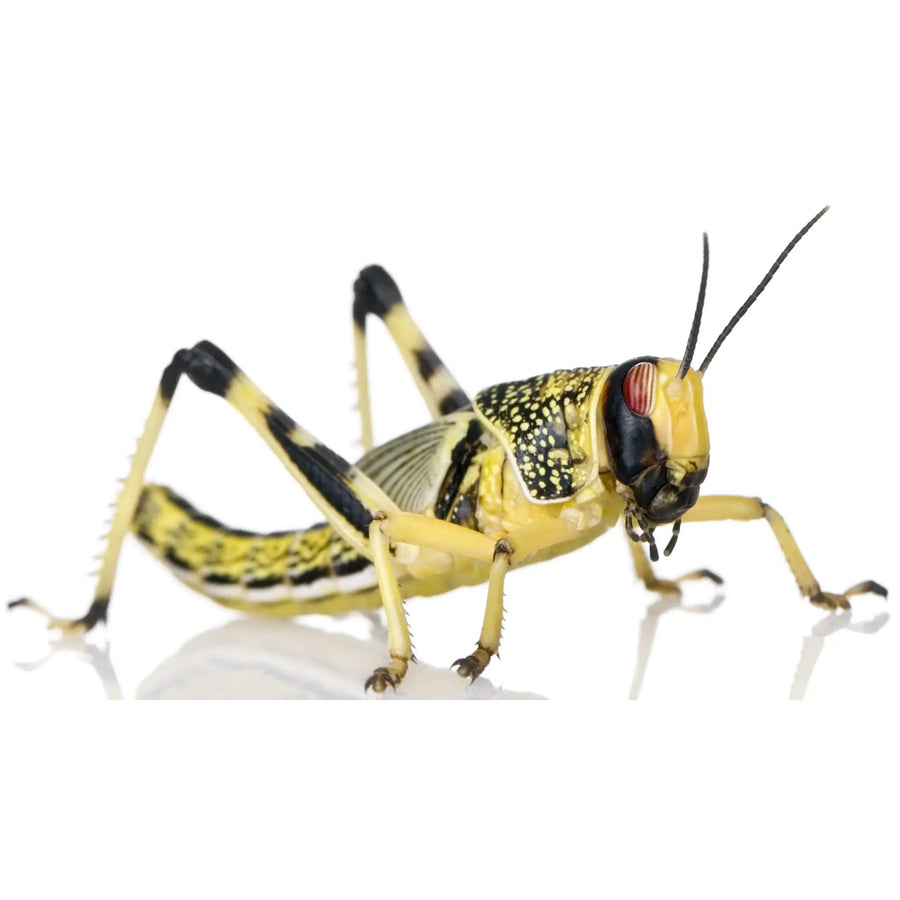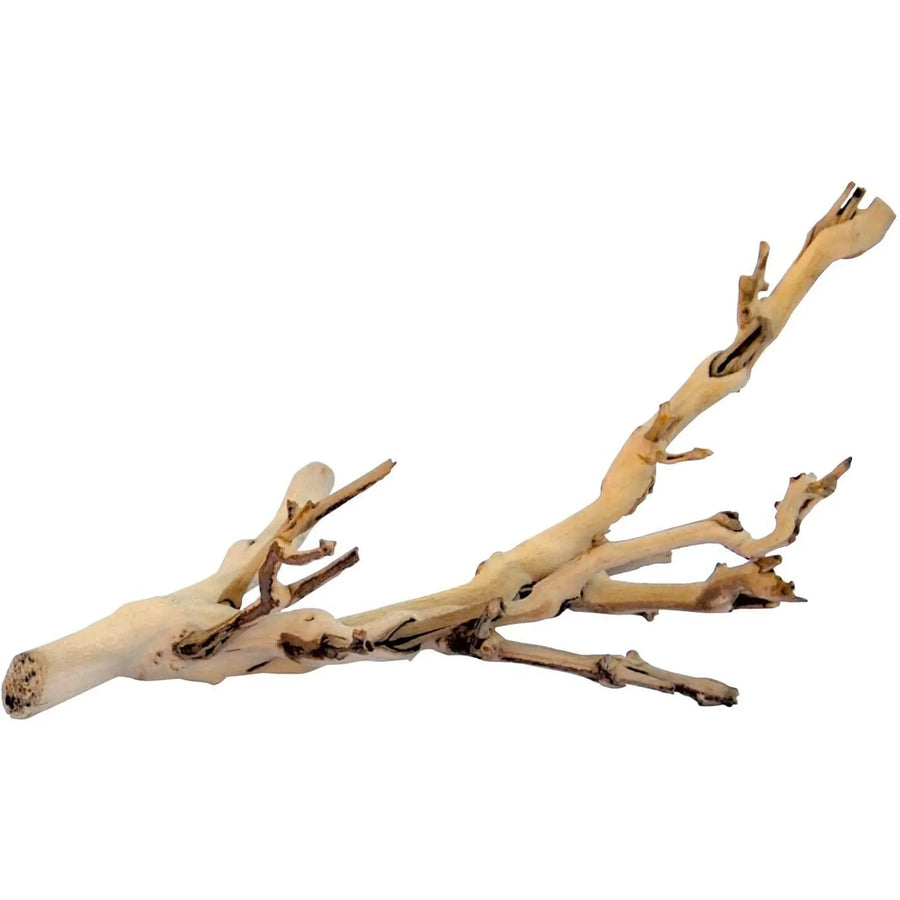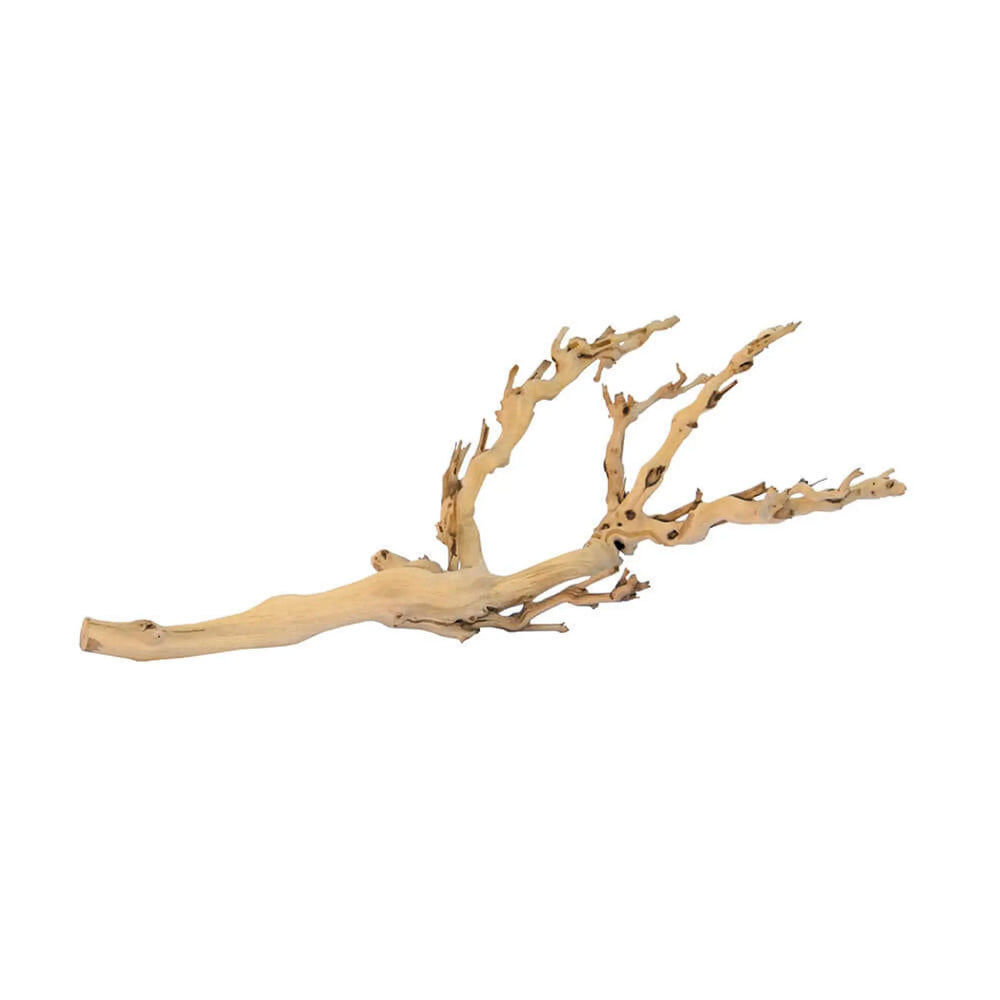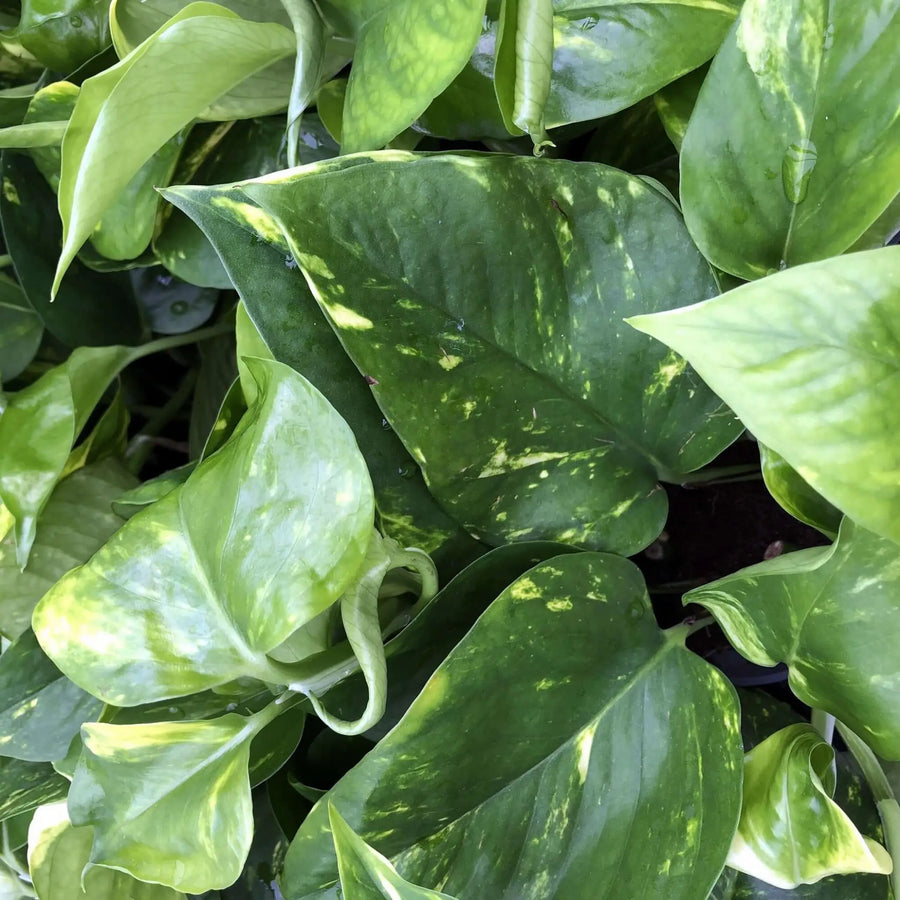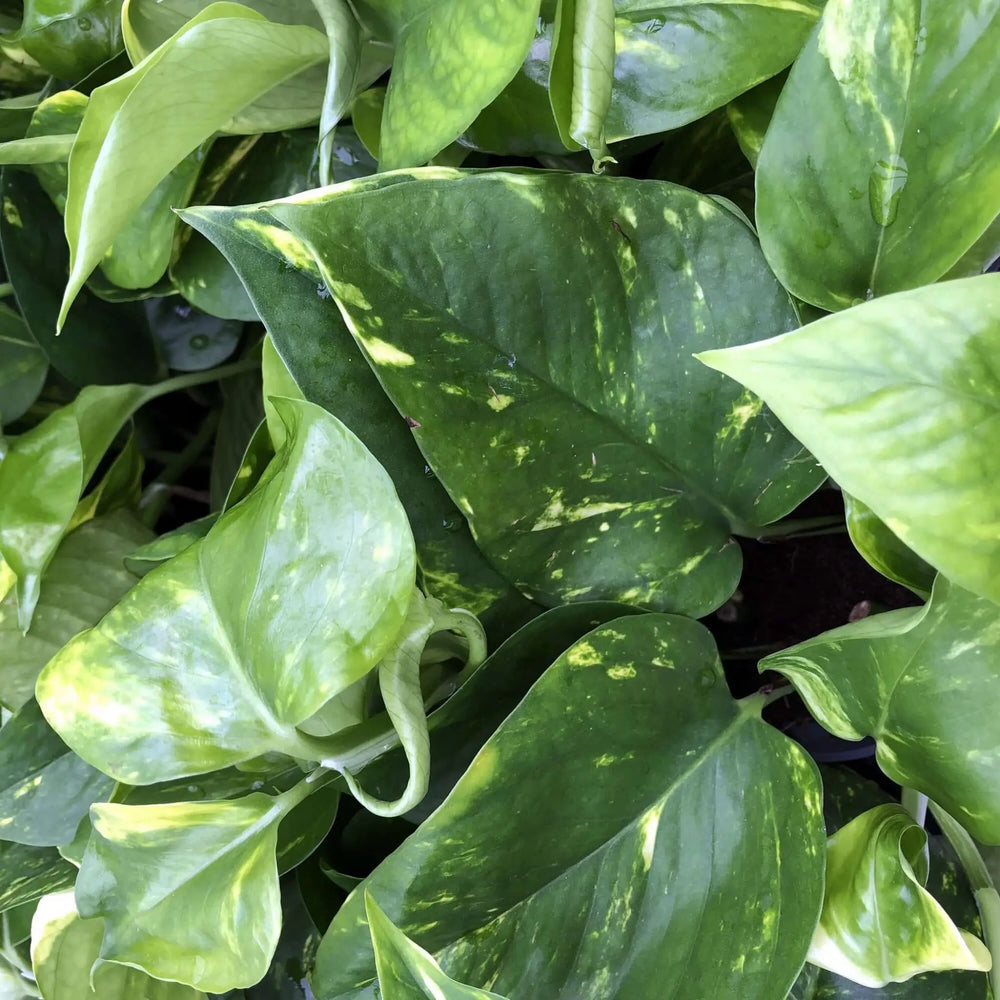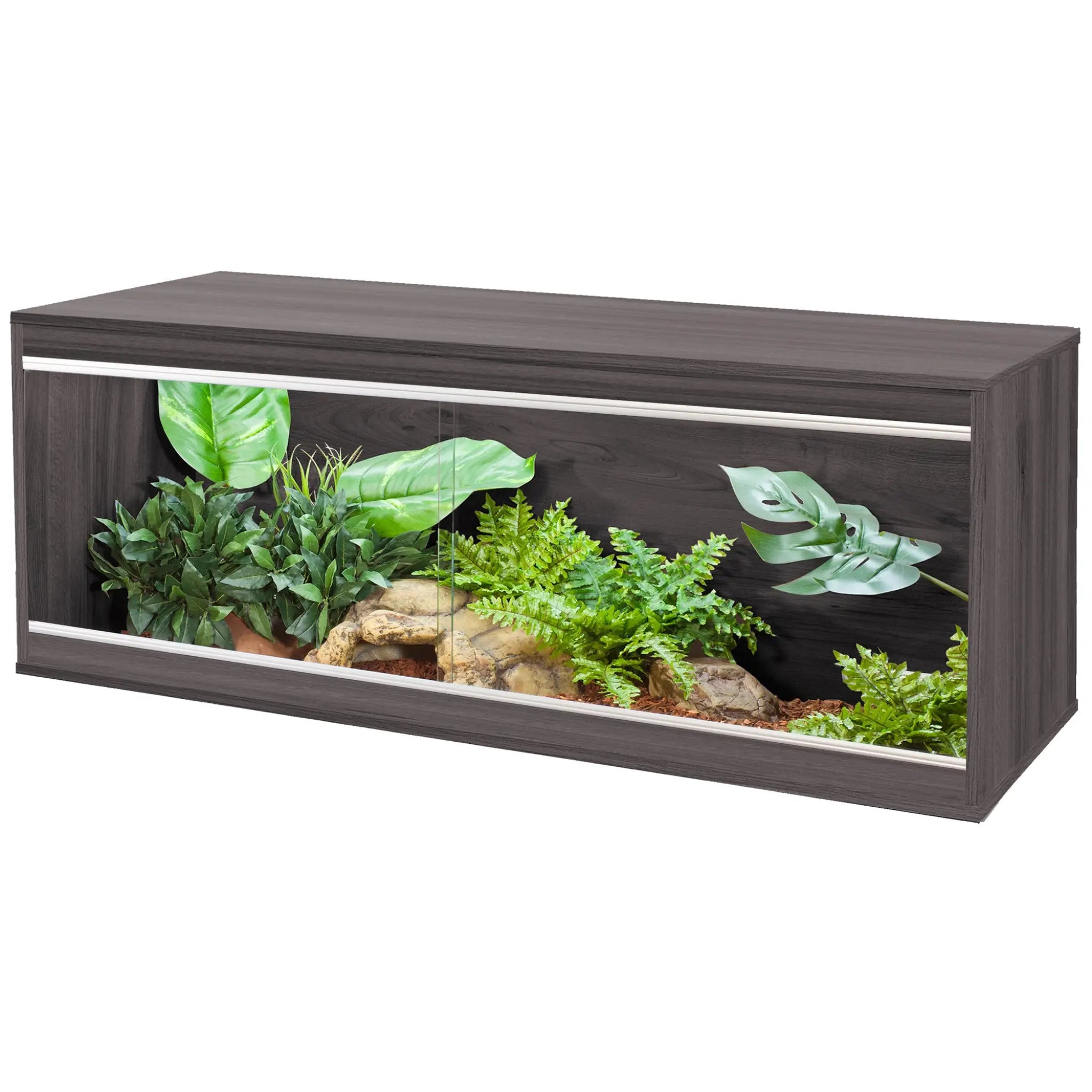
How to Make a Bioactive Vivarium: 8 Easy Steps for an Arid Setup
by Gary Rolfe on in Guides
Creating an arid bioactive vivarium is a fantastic way to mimic the natural environment for your reptile while making its care more sustainable.
By using live plants, beneficial organisms, and thoughtful design, you can establish a self-maintaining ecosystem that thrives in dry, desert-like conditions. Jungle habitats are very easy to setup are very common now, but we’re often asked by leopard gecko and bearded dragon keepers about going bioactive in arid vivariums.
This can also be done fairly easily if you follow a few simple rules, so here’s our step-by-step guide showing how we set up an arid bioactive vivarium for some leopard geckos.
Understanding Bioactive Vivariums
Bioactive enclosures are currently more popular than ever. If you’re unfamiliar with the phrase ‘bioactive’ in terms of reptile keeping, it basically means keeping your reptiles in a living ecosystem cohabiting with other organisms that form part of a natural environment.
This may include live plants, as well as ‘clean-up crew‘ critters that clean up and recycle waste in the enclosure. A balance between display animals, plants and clean-up crew with be achieved and the enclosure becomes almost self-maintaining.
Bioactive enclosures are fascinating and the interest gained by an increase in biodiversity makes it worthwhile for the keeper as well as the pets!
1. The Vivarium

Choose a good quality vivarium with decent lamination that will protect the boards. In an arid setup, the substrate will not be too wet, so no extra lining inside is required.
It is important the inside joins of the vivarium are sealed with a silicone sealant to prevent leakage and to protect the vivarium from moisture damage. We’re using a Signature Series vivarium (only available in-store) but we can also recommend the Vivexotic Viva+ range as their large front ventilation system makes them ideal.
2. Fit a Natural Background
Fitting a natural background inside the vivarium not only makes the setup look better, it will also contribute to the ecosystem within the vivarium. We’re using a Lucky Reptile Desert Cork Background.
This background had a 3-dimensional surface which allows certain reptiles and insects to climb. As it is real cork, the background will also absorb and release moisture inside the vivarium depending upon the temperature and humidity inside.
Important: make sure you run any electrical wires over the background before you push it into it’s final position. Also, do not block any ventilation, we drilled core holes into the background to ensure ventilation was maintained.
3. Install the Electricals

The electrical equipment you use inside your vivarium will mostly depend upon the species of reptile you are looking to keep. We can advise you on this, so contact us if you would like some help.
We’re going to use this vivarium for leopard geckos so have installed a basking lamp and a 6% UVB tube. Because the Northampton Reptile Centre store is always relatively warm, we have not needed to add any additional night-time heating.
No matter which species of reptile you are keeping, you will require a lamp for plant growth and we’re using an Arcadia Jungle Dawn LED secured to the vivarium roof with a Jungle Dawn fixing bracket.
4. Position Hard Landscaping

You need to create a solid foundation for your landscape. Because we are keeping leopard geckos, we needed to give them hiding places throughout the vivarium.
Using natural wooden log hides we managed to provide these hides whilst still maintaining a natural habitat. The gap between the two tubes was bridged with other natural wood products which help create a platform for planting as well as a structure for animals to bury under.
Once in place, we built a bank of Zoo Med Excavator Clay around it all. This will help keep the large pieces of wood stable and secure. The clay also provides a substrate that animals and clean-up crew can dig into if they desire.
5. Fill With Substrate

The right type of substrate is very important for your arid bioactive vivarium. Because this is a relatively dry setup, we do not need to use a drainage layer. The substrate needs to be a soily/sandy mix which will allow plants to root into it but also ensure drainage from the top.
In a hot setup, the drainage substrate will form a crust on the surface which will trap moisture below which is essential for live plants and clean up crew. We’re using Arcadia Earth Mix Arid, but there are other brands available such as ProRep BioLife Desert.
Ideally, the depth of substrate should be around 5cms to enable a correct moisture gradient.
6. Plant It Up

This is the fun bit! You’ll need to use plants that are suited to arid environments such as cacti, aloes and other succulents.
When choosing your plants, consider their final size and how that will impact the overall effect of your display. Plants often look more natural when planted in clumps of their own kind, this will become more apparent as they grow and spread.
These are the plants we used: ebony wax agave (Echeveria ebony), Harworthia enon, living stones (Lithops sp.), socotra aloe (Aloe squarrosa), burrito sedum (Sedum burrito), warty gasteria (Gasteria “little warty”), short-leaved aloe (Aloe brevifolia) and snake plant (Sansevieria mikado). Give them a good initial watering to help the roots establish into the fresh substrate.
7. Add the Clean-up Crew

Your clean-up crew are the animals that will be sharing their home with your reptiles. These small critters take care of any waste generated by animals in the vivarium which takes your maintenance time down to a minimum!
But that’s not all, the clean-up crew also keep your substrate alive! If you’re a gardener you’ll understand the importance of earthworms to your garden plants, the principles inside your arid bioactive vivarium are the same.
Your clean-up crew work within the substrate, recycling nutrients, preventing it from becoming stagnant and making it a great media for your plants to grow in.
We’ve chosen bugs that can tolerate warmer drier environments, including morio worms, woodlice and springtails. These invertebrates working away can be just as fascinating as the reptiles!
8. Introduce Your Animals

The final step. Introducing your animals. We’ve put 3 leopard geckos into our arid bioactive vivarium. They spent some time exploring their new surrounding before retreating into their natural tunnels.
We think they like it so far and should only benefit further as the biological life matures and finds a balance in the vivarium. What’s great is that the geckos definitely appear to be more active and stimulated by a more natural environment. They’re also climbing and using the additional layers in their home.
Would You Like to Do This Yourself?
We hope this guide has simplified the process for you and you might like to try it yourself! This style of arid bioactive vivarium could be used for many species of reptile including leopard geckos, bearded dragons, corn snakes and kingsnakes.
We’re confident that an arid bioactive setup is something that both you and your reptiles will enjoy. Our team at NRC are always on hand to answer any questions you may have. You can contact them by telephone (01604 753823), by email (sales@reptilecentre.com) or Facebook. Thank you for reading!
